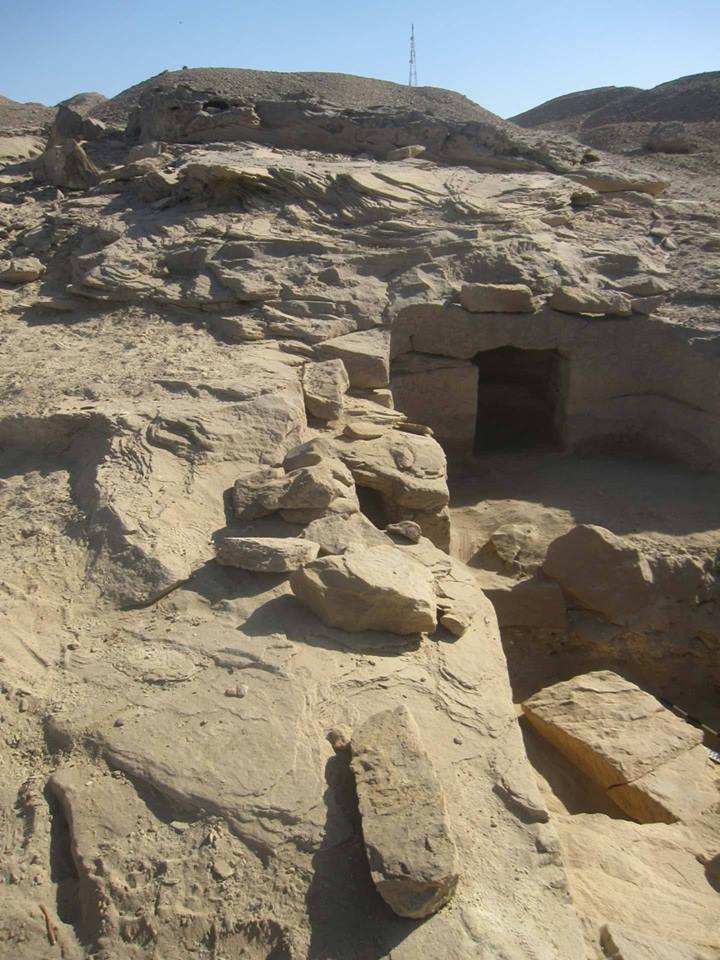Photos: More than 40 Tombs Discovered in Upper Egypt
Steps to the tomb

Steps lead into Tomb 14. The tombs were roughly cut, but most have steps leading down into the chamber. Some tombs are single-chambered, while others have two rooms. Though the wall decorations are long gone, researchers found fragments of painted mud-plaster and scraps of mummy wrappings, along with beads and pottery.
A Rough Shrine

One of the rock-cut openings analyzed by the Silsila team was not a tomb at all, but a shrine. This shrine has two rooms, open to the elements, and faces west over the Nile. The shrine is decorated with a winged solar disc — a circle representing the sun with wings on each side — which was symbol of royalty and protection.
Follow Stephanie Pappas on Twitter and Google+. Follow us @livescience, Facebook & Google+.
Bones and artifacts

The remains of bones and artifacts were found inside one of the tombs unearthed at the site of Gebel el Silsila in southern Egypt. In addition to skeletal remains, researchers found a slew of artifacts, such as amulets and ceramic vessels.
Family crypts

The most elaborate tombs found in the cemetery were crypts that, in some cases, may have contained the bones of entire families.
Get the world’s most fascinating discoveries delivered straight to your inbox.

Stephanie Pappas is a contributing writer for Live Science, covering topics ranging from geoscience to archaeology to the human brain and behavior. She was previously a senior writer for Live Science but is now a freelancer based in Denver, Colorado, and regularly contributes to Scientific American and The Monitor, the monthly magazine of the American Psychological Association. Stephanie received a bachelor's degree in psychology from the University of South Carolina and a graduate certificate in science communication from the University of California, Santa Cruz.


